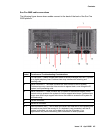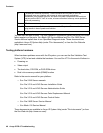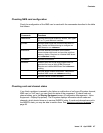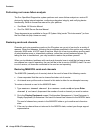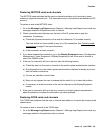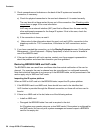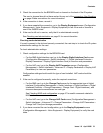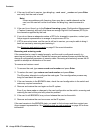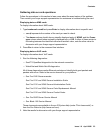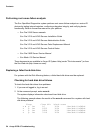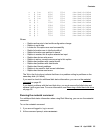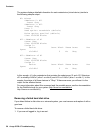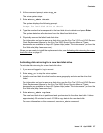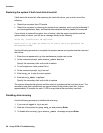Contents
Issue 1.0 April 2006 53
Gathering data on card operations
Follow the procedures in this section to learn more about the exact nature of the problem.
Then contact your Avaya support representative for assistance in troubleshooting the card.
Displaying data on NMS cards
To display information about NMS cards:
1. Type trunkmon-b card# and press Enter to display information about a specific card.
― card# represents the number of the card you want to check.
― The alarms column should show a steadily-displayed entry of NONE, and the Frame
sync column should show a steadily-displayed entry of OK. If either of these entries is
fluctuating between the identified values and another value, note the other value for
discussion with your Avaya support representative.
2. Press Esc to return to the command-line interface.
Displaying data on VoIP cards
To display information about VoIP cards:
1. Run the following diagnostics:
― SunVTS OpenBoot diagnostics for the network connection
― Watch-Net and Watch Net-All diagnostics
All of these diagnostics monitor Ethernet packets and identify both good packets and
packets with errors. Refer to the service manual for your platform:
― Sun Fire V240 Server manuals:
Sun Fire V210 and V240 Servers Installation Guide
Sun Fire V210 and V240 Servers Administration Guide
Sun Fire V210 and V240 Servers Parts Replacement Manual
Sun Fire V210 and V240 Servers Product Notes
― Sun Fire 280R Server Service Manual
― Sun Blade 150 Service Manual
These documents are available in Avaya IR System Help (under "Print documents") or
from the Sun Web site (http://www.sun.com).
2. Note the results for discussion with your Avaya support representative.



